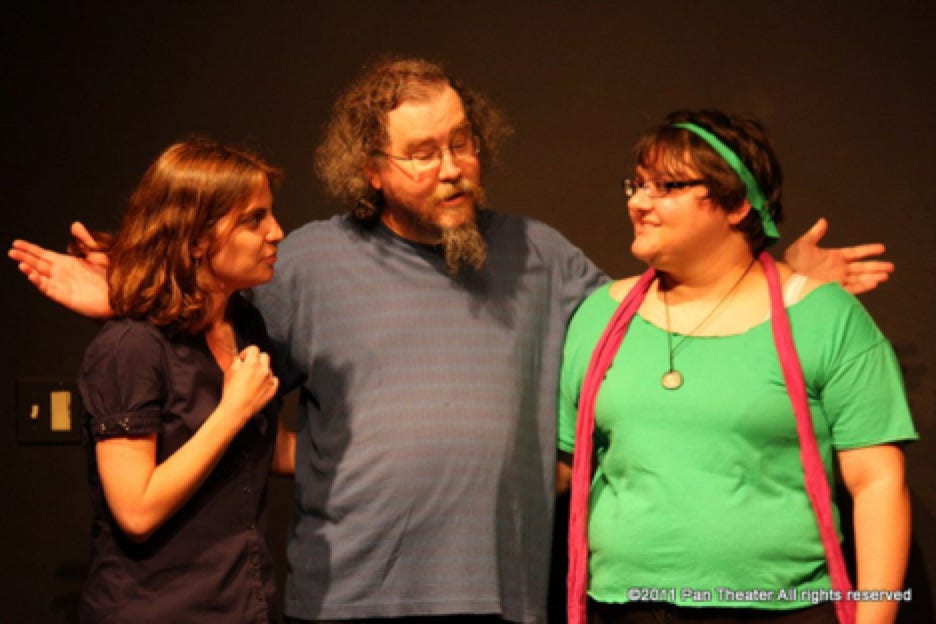Improv Theater or making stuff up
(What it is short form and long form?)

(Katie, Jeff and Rachel Pan - 2011)
Improvisational Theater, Improv Theater, Improv or Impro is the art of making theater up without a script.
Performers create characters, stories, monologues and scenes up without prior planning of the actual piece.
Improv actors typically take an audience idea such as a non-geographic location, an emotion, a relationship or other related idea and create the piece of theater from that original source.
The original idea or "suggestion" is used to connect the audience to the piece and to prove the piece isn't based on a script.
Improv Theater is often assumed to be improv comedy, but the work can just as often be dramatic, touching or abstract.
There are two broad types of improv theater (or theatre): short form and long form.
Short form improv theater focuses on shorter scenes often centered around a theater game. The theater game provides a limitation or focus for the actor. The original use of theater games was to work on specific acting skills but the games themselves were found to be entertaining to an audience. Performers began polishing the pieces and practicing the techniques that would allow a particular theater game to hit a stride.
Short form tends toward comedic though often a game will provide the piece and actors with a grounding that allows for deeper work to emerge that can create drama or be a more rewarding "funny".
The other main type of improv theater is long form. Long theater is more typically longer. Often times improv actors will take a single idea and improvise nonstop for twenty minutes to as long as two hours. Such work often incorporates theater games that emerge.
Improv actors typically practice basic skills and formats and then when performance time comes they apply this improv acting skills to the given suggestions provided by the audience. The skill of the performers can often create work that can rival either dramatic or comedic scripted work. The audience goes along with the performers on the ride. They get to see the raw process of theater.
Improvised theater has been referred to as theater created after you jump off the diving board, flying without a script, and making stuff up. What should be obvious is that while the individual scene or show is improvised the skills of the performer are developed much like those of an athlete through practice and rehearsal. The performance (game) is the playing of the teams within the bounds. WIthin the bounds the work itself is made up or improvised.
Performers practice letting go of judgement, releasing their impulses and imaginations and working as a team in the creation of a night of communal theater. The give and take of the team creates the theater. The playing of the game whether it a theater game or the game of a relationship allows for the performers to act without a script.
It is great fun. Some find it freeing. Others find it a creative outlet and some find it a healthy addiction in a world of less than healthy additions. It is often referred to as art therapy for the actor.